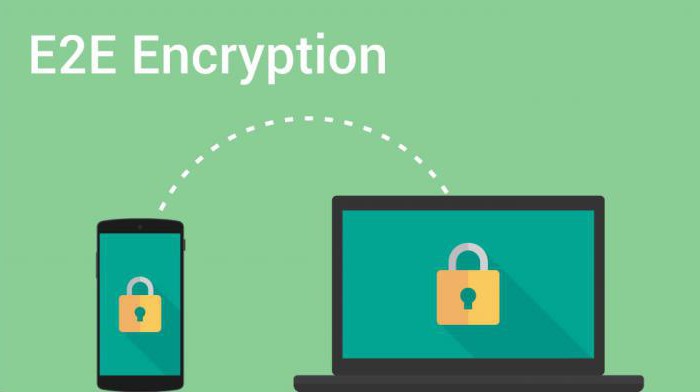The issue of protecting transmitted data on the network is urgent during the ubiquitous penetration of the Internet into all spheres of human life. Many attackers can use confidential information for their own purposes for committing offenses. Modern messengers and services use encryption of messages and data that only the addressee can read.
A bit of history
The first hints of encryption appeared in antiquity. Secret records began to be used to conceal texts, decrees, correspondence, and recipes. Of course, then the encryption technology was much simpler - the letters of the alphabet changed to numbers, other characters, or skipped altogether. The addressee knew the designations of all the characters and could read the message.

Active development of encryption acquired during the Great Patriotic War. During this turbulent period, it was required to transmit instructions between units and even countries in such a way that the enemy could not find out about upcoming plans and actions. Germany was particularly successful in this with its famous Enigma machine. For some time, the messages created with its help, it was impossible to decrypt. However, the British cryptographers still managed to crack the cipher, and although the German command changed the algorithm several times, until the end of the war the British read messages encrypted using the machine.
Modernity
For the first time, the issue of computer network security arose in the USA in 1972. In the process of analyzing and developing the algorithm, the DES encryption standard was recognized as official in 1977 and was used to transmit government data.
Since then, many new types and methods of encryption have been published. Apart is the method called "end-to-end encryption." It is used to ensure confidentiality in instant messengers.
End-to-end encryption
The meaning of this approach is expressed in general terms in that only the participants in the correspondence have the key to decrypt messages. For example, you can cite an algorithm for working with any site. Probably, many paid attention, visiting the Internet, that sometimes https appears in the address bar instead of http in the address bar. This means that the connection between the site and the user is secured using an encrypted channel, such as SSL. But there is one caveat - the key for it is on the server. That is, an attacker, gaining access to the site, will become the owner of the key.
End-to-end encryption allows you to exclude intermediaries with access to the decryption tool from the chain. That is, only two participants in the correspondence will have the key.
There is an opinion that the most popular messenger WhatsApp was the first to use end-to-end encryption. However, it is not. The first to use it was the Signal messenger. By the way, the protocol of the method is of the same name. Which in one form or another is used in other means of sending messages - WhatsApp, Facebook Messenger, Viber and others.
Algorithm Properties
What does end-to-end encryption mean? When a communication session is established between two users, two keys are generated on their devices - private and public. The first is used to decrypt messages, the second - to encrypt them. The private key never leaves the device. But the open one is sent in natural form to the interlocutor. This process occurs in a bilateral mode, that is, for both participants.
This approach to encryption allows you to create a high level of message security. On the other hand, implementing end-to-end encryption will require more resources than in the classical form.
Another negative point is that on the servers of many instant messengers with end-to-end encryption all the service information is stored - who communicates with whom, through which services, clients, geolocation, as well as all routing information. Although this does not create the ability to read a specific message, it allows you to establish the fact of correspondence between two users.
Whatsapp Application
What is end-to-end encryption at Watsap? This messenger implements the Signal application algorithm, which in turn is based on Double Ratchet - Double Ratchet encryption. This term is taken from Enigma, in which "ratchets" ensured the uniqueness of each key when encrypting data. A "double" - means that the key can not be repeated almost never.
End-to-end encryption in Vatsap means that on each smartphone the participants in the conversation form their own keys and decrypt messages received from other interlocutors only with their help.
The development of encryption technology
To date, there have been no cases of mass hacking of user correspondence. Although in many instant messengers it was possible to implement a substitution of a subscriber, yet it was impossible to read secret chats. Therefore, maintaining confidentiality during correspondence in various services still works.
Finally
The article examined in detail what “protected by end-to-end encryption” means. Security algorithms, key transfer methods, and the history of the first cryptographic surveys were also described. Today, the software market is ready to offer users a huge selection of different instant messengers and services for messaging.
Some of them encrypt their channels, some do not. The Telegram messenger, which promises the highest possible safety and security, and which has already gained little scandals and intrigues, is gaining wide popularity. At the same time, it uses a special end-to-end encryption mode based on the MTProto protocol. How effective is it - time will tell.